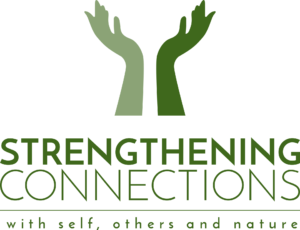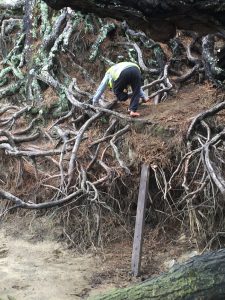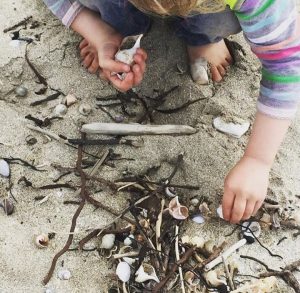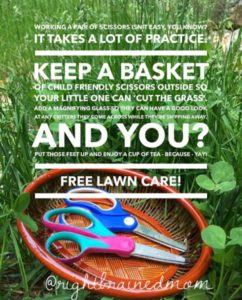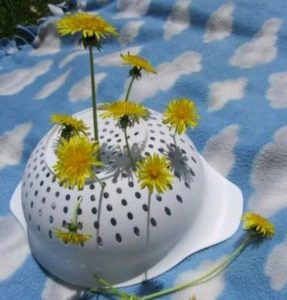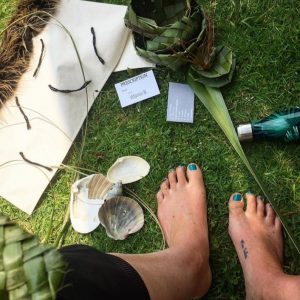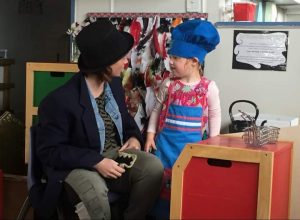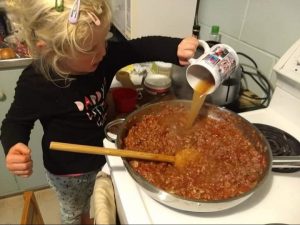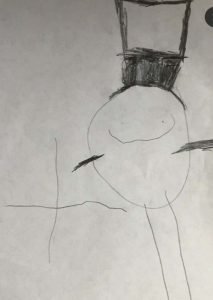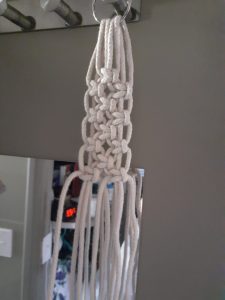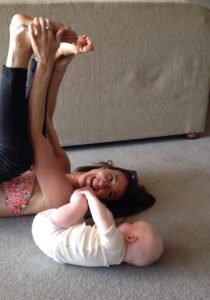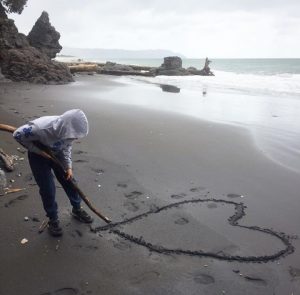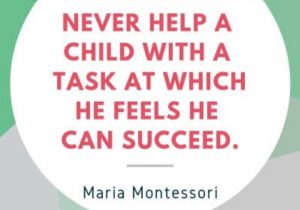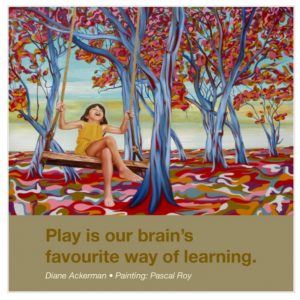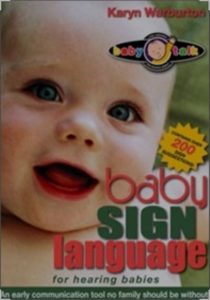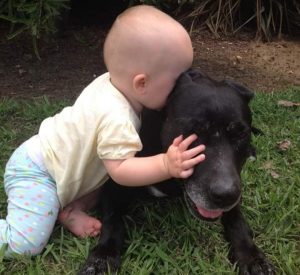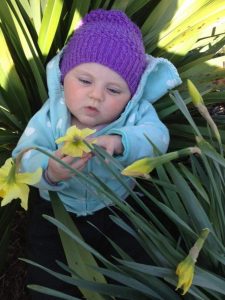The term ‘terrible twos’ makes me cringe. If you see this stage as that, that is exactly what it will be. Or, you can change your attitude and view children in this stage as curious, energetic and joyful.
This is one of those stages where we MUST change our attitude
Its time to change our attitude
Toddlers go through a big change in emotional and physical development as they learn to walk, talk, and find their place in this world. They are curious, gaining understanding of the world around them, how things work, routines and expectations and joy for life.

PREPARE
Toddlers are busy explorers who want to touch, feel and tuttoo as they learn through their senses.
So how do we manage this learning? We need to prepare the environment in a way that enables them to play out their urges without leaving the adults/teachers feeling overwhelmed and frustrated.
The tipping and transportation urges are often extreme in the toddler stage, so, to manage this, fill your environment with larger objects (pinecones, pumice, large shells boxes/containers, blocks, toy cars) baskets, bags and trolleys.
It is our role to support them in their learning and enable them to play out their urges. The more we plan the environment to allow children to fulfill their play urges, the sooner they will move/work through the urge. The more we try to stop it, the more they will do it, it’s an urge and they need to fulfill it. This is where the frustration comes for the adults.
Pennie Brownlee has written an article titled ‘Something made me do it’. You can find it at https://penniebrownlee.weebly.com/articles.html
Brownlee delves deeper into play urges in her fabulous book titled ‘The Sacred Urge to Play’. Check it out. This book is a necessary read for anyone working with or caring for children.
Both of these readings will change your perspective as they help you understand the makings of a harmonious play space.
PLAY
As well as creating an environment to foster childrens play urges, we need to prepare the environment with spaces for a variety of play experiences. Through play, they make sense of their world.
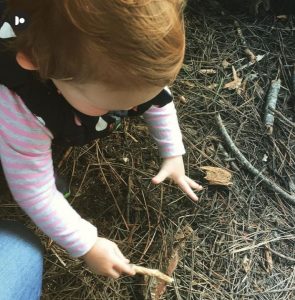
As I mentioned, toddlers are learning through their senses. Take them outside. Nature will work and stimulate ALL senses. Children cannot bounce off the walls if there are no walls.

Provide a space where they can dig, climb, roll and jump… Trees, sandpit, mud/dirt, boxes etc.
Family play – cooking, cleaning (dustpan and brush), dress ups.
Trolleys and balls are also great resources for learning, however, it is important to have plenty. 3 won’t cut it when you have 10 children in your space.
Yes, children need to learn to ‘take turns’ but this doesn’t happen in the toddler stage.
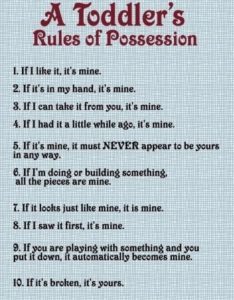
‘You can have a turn when I’m finished‘ is a kind way to encourage social learning. Everyone deserves the right to complete their turn with anything. And, we need to trUst that the child WILL finish. It is then, that someone else can have a turn. Please respect this.
If we make a big deal of it, the child is only going to want it for longer, because remember, ‘where the attention goes, the behaviour grows’.
CONFLICT RESOLUTION
Toddlers will often have challenges and conflict in their play.
We foster empowerment by allowing children time to work through their struggles, frustrations and ‘learning moments’. Trust that your child is capable of doing so, because you have been feeding them the tools to work through these. They can do it! This is learning!
Often disagreements happen over objects at this age. The only time we need to step in is if someone is going to get hurt.
Therefore, Observation and presence are key when toddlers are playing socially.
Toddlers haven’t learnt about social cues nor do they have the language to express their wants and needs. Often this can result in physical harm such as hitting, kicking and biting.
Behaviours sent to challenge us
If things get violent, approach calmly and offer your help, without assumption ‘can I help you?’ We can support them with the words ‘you can have a turn when I’m finished’.
Sign language is great for bringing calm and reassuring – ‘kind hands’, ‘hurt’, ‘finished’.
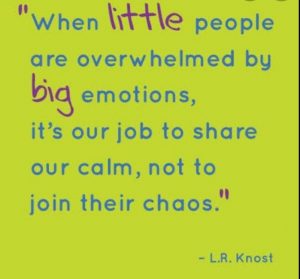
COMMUNICATION IS KEY
Just imagine you are busy working on something, a craft project or baking a cake, and someone comes and tells you it’s time to go to the toilet, or to the shops. You have to drop everything and go. Your glue will set or your mixture will go glat. Tough. It’s time to go.
How would you feel?
So, the key is to be respectful and communicate.
It all comes down to communication, fairness and respect. Would you want to be whisked away?
Inform the child a routine, ritual or transition is about to occur.
‘2 minutes’ is a good way. Showing 2 fingers.
Then you go back, ‘1 minute’
Then finally ‘it is time to ….’.
The child has had warning. They have been able to complete their play or get it to a point where they are happy to leave it and come back to it later.
As the adult, it is important to choose your timing for how long each ‘minute’ takes. Observe the child, know when it is a fair time, choose your battles. If they are fully engrossed in what they are doing, make it a long minute. If they look like they are ready to move on to the next thing, make it a very short minute…make the most of the natural breaks in their play. Be smart about it. Observe and notice what they are doing. Know when to approach for best results.
If, when you tell them after the warnings, that it is time to go (or when you need them to do something that you have told them will be happening in 2 minutes, because warnings are so important), and they defy, you simply give them choices.
Choices are so valuable. They help the child feel like they are in control.
Only ever 2 choices. If you are needing them to do something (nappy change, brush teeth, get dress or get in the car) you simply give them the choice of ‘by yourself or with my help?’
Either way, they are coming.
Or you give a choice of ‘are you going to wear the red socks or the blue socks?’ Either way, they are wearing the socks.
You see?
Yet they feel power in the situation because it is ultimately their choice.
Either choice is a good choice. Remember you gave them the choice. So dont offer a choice you are not ok with. Dont ridicule them for choosing that they want your help. You gave them the choice, so whichever choice is a good one. Regardless, the ‘job’will be done.
So often, tantrums occur because we haven’t communicated clearly.
It is important to keep words to a minimum and repeat the same sentence/choices/wording consistently. Use the same words. If they dont respond the first time, avoid ‘glorifying’ with more words or rephrasing. just repeat what you said the first time, in the same kind tone. As soon as you change your wording you are showing there is leniency in your expectations. Keep it consistent. If they ask for an alternative choice, you simply respond with the first two choices you gave them. This teaches the child to trust your word, your expectations and know what you say is how it is.
Tone is so important here. Use a kind tone in all of this. They are not in trouble.
Defiancy only happens when we disrespect and treat them without kindness. Remember, kindness is key!
INVITATION GESTURE
Invitation is a great strategy for bringing calm, communicating and respecting a childs space.
Pennie Brownlee talks about the invitation gesture.
Please take the time to check out her explanation at https://penniebrownlee.weebly.com/articles.html article titled ‘Will you, won’t you”.
The invitation gesture is so powerful!
In my 18+ years of teaching, this has been perhaps one of my MOST VALUABLE and effective learnings.
Since implementing ‘invitation’ and showing patience while I allow children the time to respond, I have found relationships strengthen far quicker than without. Trust is formed and their voice is valued. It is empowering to see that children ACTUALLY know what they want and need and when they are ready they will respond. This tool can be used for children of all ages. There is less confrontation as they get older as we continue to use it, toddlers respond particularly well to being given time and space to respond, when THEY are ready!
“Show me when you’re ready” is a great way to allow them to feel they have a choice in the matter.
“Show me when you’re ready”
… for me to change your nappy, to brush your teeth, to put your shoes on.
Sitting with your hands open, inviting them, shows them you are waiting. Children want to please. They want to make you happy. While you wait, in a calm, patient manner, using the invitation gesture, they WILL come! Try it!
If a child is hurt, I would ask ‘can I help you?’ And invite them in.
Just woken from their sleep? ‘Would you like a hug?’ With invitation gesture.
It is NOT OK for us to ‘assume’a child wants a hug or to be picked up. Please ask them first, using the invitation gesture.
Respect fosters respect.
Kindness attracts kindness.
Communication promotes communication.
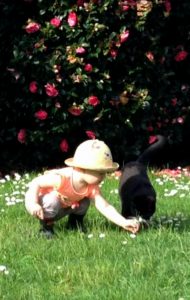
For years we have under valued the ability and understanding children have, from birth!
We just need to communicate clearly and with kindness. Empower our children. Believe in them and allow them the freedom to choose.
Here’s to happy days with our toddlers!

If there is something I haven’t covered, or an area you would like more support with, let me know in the comments section below.
Nga mihi nui
Nickie
